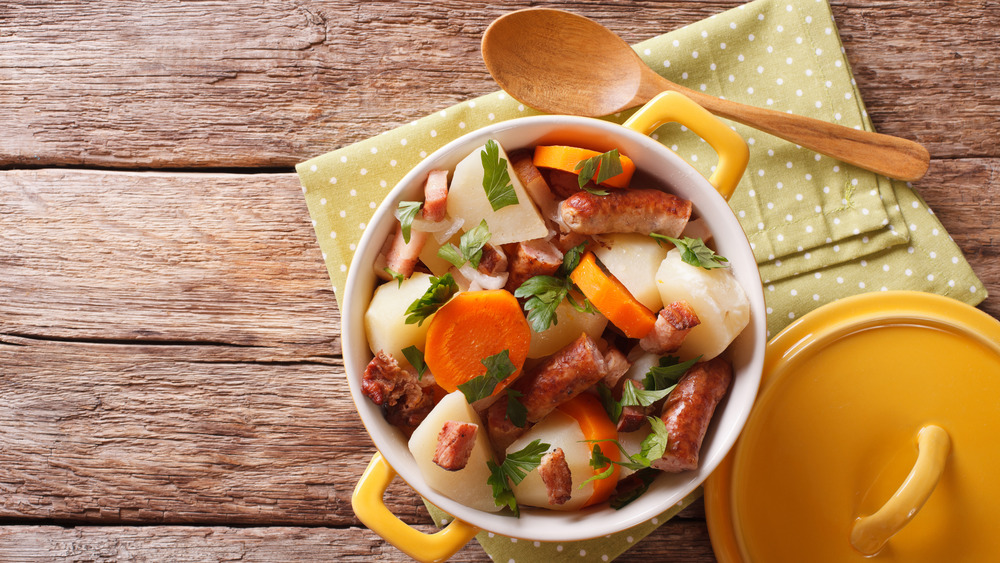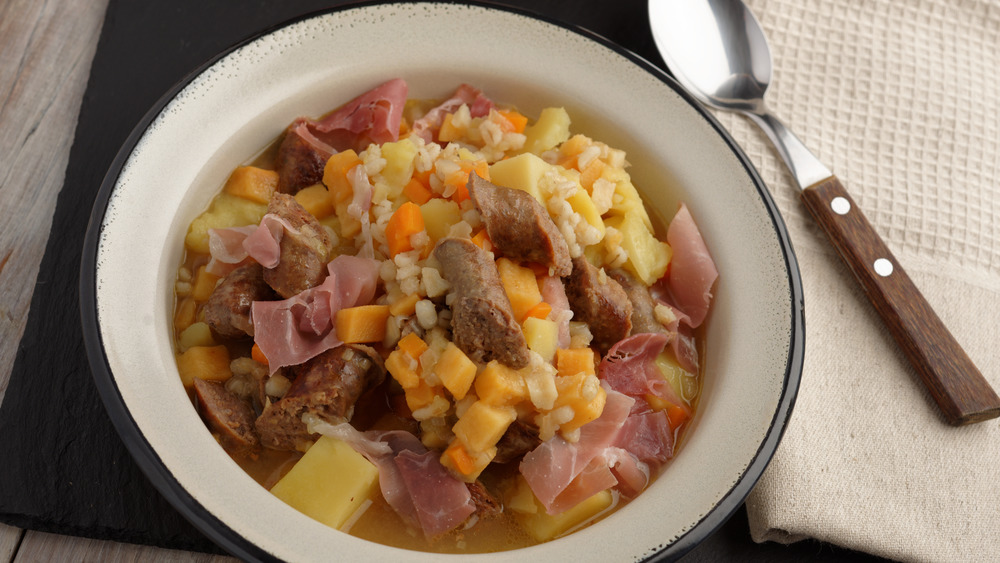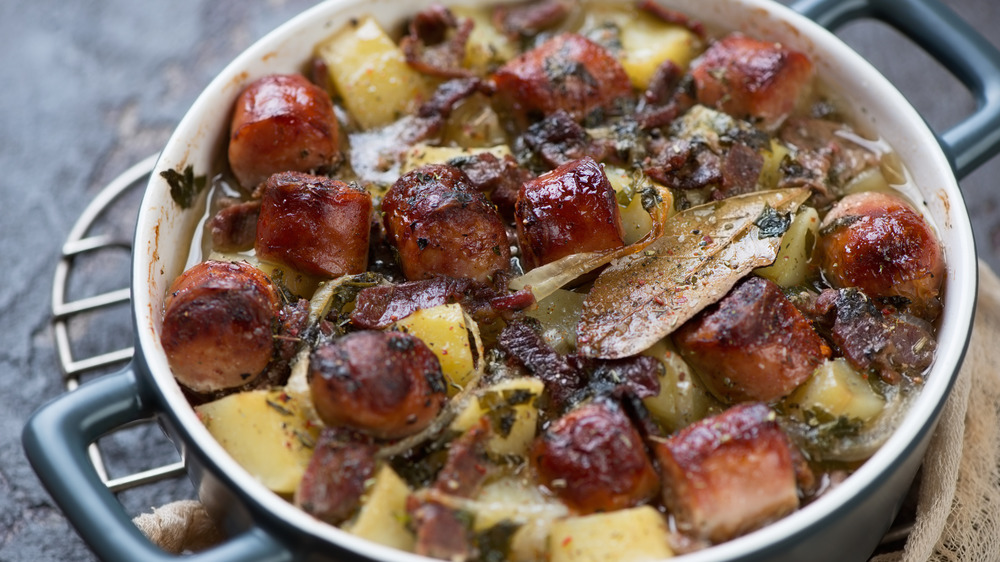What Is Dublin Coddle And What Does It Taste Like
So, St. Patrick's Day is coming up, and while it's not one of the major food holidays, any holiday can and should be a food holiday if you love cooking and eating as much as we do. The problem with St. Paddy's, though, is that its signature dish, corned beef and cabbage, is...well, something that doesn't appeal to everybody. In fact, if you're of Irish ancestry and have been forced to eat the stuff on a regular basis throughout your childhood, it might even spur thoughts such as "Oh, this is why Granny Fitzpatrick chose to leave the Auld Sod!"
As a matter of fact, though, Smithsonian Magazine points out that if you're not a fan of corned beef or its stinky, gas-producing companion, you're in good company. The Irish still living in Ireland are no more likely to celebrate the saint's day with such a meal than they are to put green dye in their Guinness. Instead, a far more authentic, and dare we say more delicious, dish is the easy-to-make Dublin coddle.
What goes into Dublin coddle
As its name implies, Dublin coddle couldn't be more Irish. Food blog Wholefully describes it as true working-class food, and the kind of thing that every family has its own recipe for — or not even recipe, really, since with such a dish there's seldom the need for such formality. It's basically a kind of stew using the ingredients that were likely to be on hand at any time of year: the long-lasting staple veggies onions and potatoes (of course potatoes) along with a flavorful bit of bacon or sausage (or both, if you're lucky enough to have a well-stocked larder).
Although American sausages and bacon aren't exactly the same as their Irish counterparts, that's okay — this dish is a very forgiving one. Wholefully noted that bratwurst or Polish sausage are fine; Italian sausages would be great, too, and even breakfast sausages would work — links, not patties, though, as the latter won't be sufficiently chunky to give the coddle it's proper stew-like consistency.
How to make Dublin coddle
Start by frying up the bacon, then brown the sausages in the same pan. No need to cook them all the way through since they'll have plenty of time to cook in the oven. Add a little flour to the pan grease to make a roux, then either pour in a bottle of beer or about a cup and a half of stock or water to make the gravy. Alternate layers of sliced potatoes, onions, bacon, and sliced sausages in a casserole dish, seasoning with chopped garlic, parsley, thyme, bay leaves, and black pepper, if desired. Feel free to sub in any other spices you like, as well. Sure, adobo or five-spice powder may not be authentically Irish, but fusion cuisine is cool.
Pour the gravy over the top, cover the casserole (no lid? use a big piece of aluminum foil), then bake at 300 degrees for anywhere from two to five hours. It'll be done after two hours, but Wholefully says you can leave it in the oven a lot longer without harming it. Maybe just take a peek every now and then, and add more liquid if it looks dry.
Coddle, with its meat and potatoes, is pretty much a one-pot meal, but you can serve it with a side of soda bread if you want to double down on the Irish-ness. (You should probably skip the kind with raisins, though).


